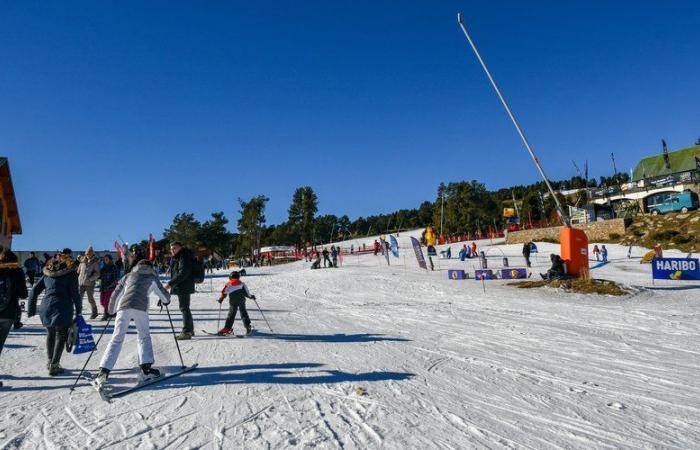“A warm-up lap” : several resorts in the Alps are opening the first slopes this Saturday, kicking off a ski season which risks seeing the gap between high altitude and mid-mountain areas widen.
Like every year, the Savoyards Tignes et Val Thorenslocated partly at more than 2,000 meters, draw the first. The second, affected by a cable car accident which left eight people injured, including two seriously, last Tuesday, indicated that it would still remain open.
Also read:
Terrible accident in the Alps: cable car with 16 people on board does not stop on arrival, 2 seriously injured
Conversely, the Grands Montets resort (Haute-Savoie), which also planned to launch this Saturday, indicated that it would postpone its opening by a week. Most other areas will stagger their opening between now and Noël depending on weather and snow conditions.
The Alpine massifs benefited this week from strong and early snowfall caused by the passage of the storm Caetano THURSDAY. But they should be followed this weekend by a “powerful redoux”announced Météo-France. Even open, the stations will not yet be operating at full capacity. “The challenge is above all to launch the season, to get the teams up to speed, to set up the events. The activity really starts in the following weeks […] There, these are more like weeks of warm-up laps.”explains to AFP Frédéric Porte, general manager of Tignes Développement, the company which manages the station's activity.
Currently, reservations are “rather very good for the season”especially the week of New Yeardespite a package which should see its price increase by around 5%, he underlines.
Customer reporting
Same echo from the National Association of Mayors of Mountain Resorts (ANMSM), whose observatory anticipates a 5% increase in the occupancy rate in December 2024 compared to December 2023. The fact remains that this positive trend covers “differences […] according to the massifs and the stations”recognizes the ANMSM. “Occupancy rates could also change during the season depending on snow cover and generally weather conditions”warns its president Jean-Luch Boch.
In the Pyreneesthe first station openings scheduled for the end of November are uncertain due to the lack of snow. But the president of the Pyrenees section of Domaines Skiables de France (DSF) Laurent Garcia notes that “the bulk of the season” is played after Christmas.
Last year, many mid-mountain resorts found themselves in difficulty during the winter holidays due to lack of snow and temperatures that were too mild, making it impossible to produce snow. Conversely, the high altitude Alpine resorts had benefited from excess snowfall and a clear transfer of customers. The gap between these stations and those located lower or further south is expected to widen due to the global warmingscientists estimate.
“Fatalistic customer”
At the start of the season, Fabrice Mielzarek, director of the Tourist Office of Villard-de-Lans (Isère), declares “no way” worried about attendance. “I believe that the client is resilient and fatalistic”he told AFP. “A lot of people tour on the same tracks. So, when we open 60-80% of the area, I want to say that that’s enough”he emphasizes.
The resort, located in the Vercors massif between 1,500 and 2,000 meters above sea level, has also long had a large “palette” of non-ski activities adapted to its regional and family clientele in the event of a lack of snow, he explains. “Certain low and medium altitude resorts are facing the full force of the effects of global warming and lack of snow. They are rapidly changing their model with difficult choices to make”noted this week on France 3 the Minister Delegate in charge of the Tourism Economy Marina Ferrari. “We have to help them. But I have good hope, we will continue to ski”she added, while the Court of Auditors ruled last year that the economic model of French skiing was “out of breath”.
Two areas, Notre-Dame-du-Pré (Savoie) and Seyne-les-Alpes (Alpes-de-Haute-Provence) announced in the fall that they were going out of business, while the Isère resort of l'Alpe du Grand Serre, benefited from a one-year moratorium.






